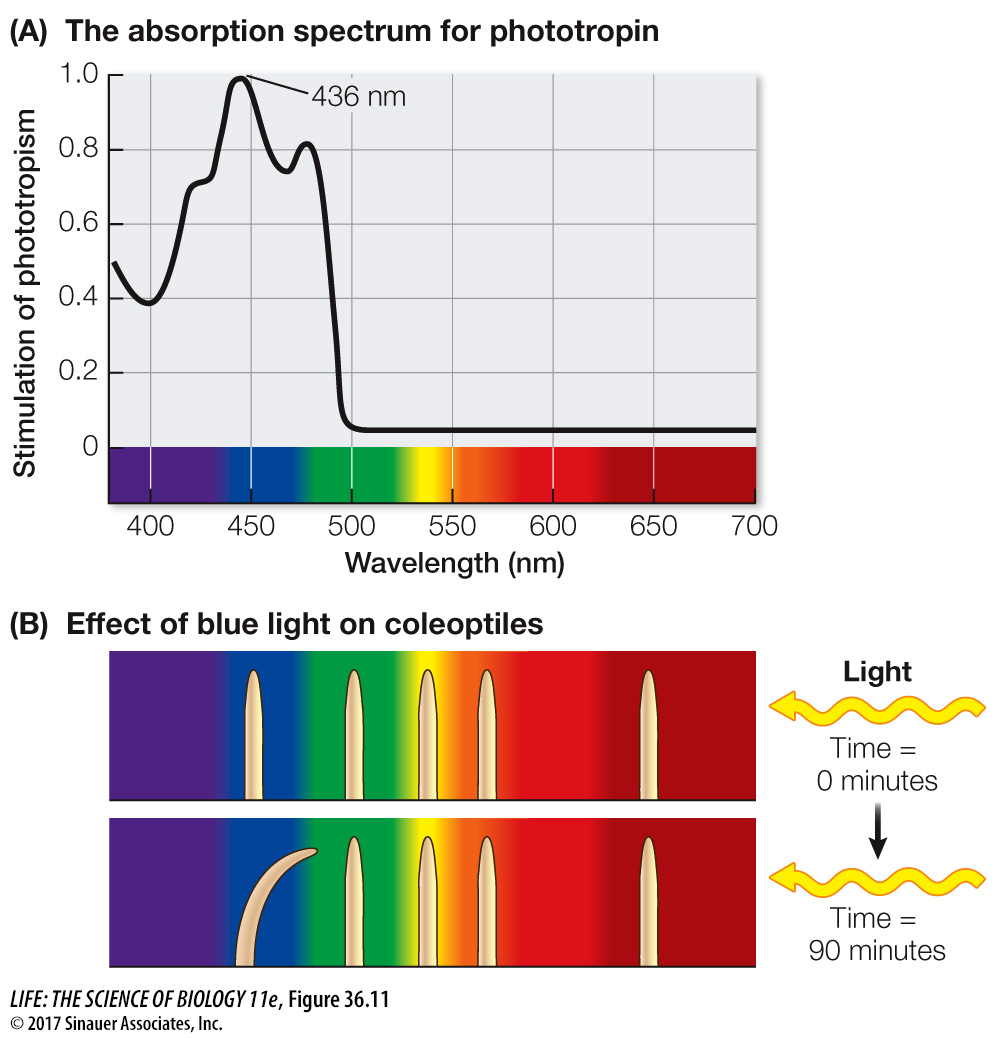Phototropins, cryptochromes, and zeaxanthin are blue-light receptors
Charles and Francis Darwin showed that the apical tip of a growing coleoptile receives light as a signal and then redistributes auxin to stimulate cell elongation below the tip on the shaded side. You may recall from Chapter 10 that an action spectrum involves exposing plants to different wavelengths of light to determine what wavelengths are most effective in driving a given process (e.g., photosynthesis). For photosynthesis, such studies showed that the most effective wavelengths are those absorbed by chlorophylls (see Figure 10.4). When an action spectrum was obtained for phototropism of coleoptiles, blue light (peak 436 nanometers [nm]) was found to be the most effective at inducing the coleoptile to curve (Figure 36.11). What is the blue-light-absorbing receptor/pigment? Biologists have used a genetic approach to answer this question, once again employing the model plant Arabidopsis.

Figure 36.11 Action Spectrum for Phototropism (A) The action spectrum for bending of a coleoptile toward light is similar to the absorption spectrum for the receptor, phototropin. (B) After 90 minutes, only the coleoptiles exposed to blue light bend.
Researchers recovered blue-light-insensitive mutant Arabidopsis plants from a genetic screen and identified the gene for a blue-light receptor protein located in the cell membrane called phototropin. Phototropin protein has a flavin mononucleotide associated with it that absorbs blue light, leading to a change in the shape of the protein. This change exposes an active site for a protein kinase, which in turn initiates a signal transduction cascade that ultimately results in the stimulation of cell elongation by auxin. Phototropin is also involved in chloroplast movements in relation to light, and participates with another type of blue-light receptor, the plastid pigment zeaxanthin, in the light-induced opening of stomata.
Page 780
Another class of blue-light receptors is the cryptochromes, which absorb blue and ultraviolet light. These yellow pigments are located primarily in the plant cell nucleus and affect seedling development and flowering. The exact mechanism of cryptochrome action is not yet known. Strong blue light inhibits cell elongation through the action of cryptochromes, although the most rapid responses are mediated by phototropins.
